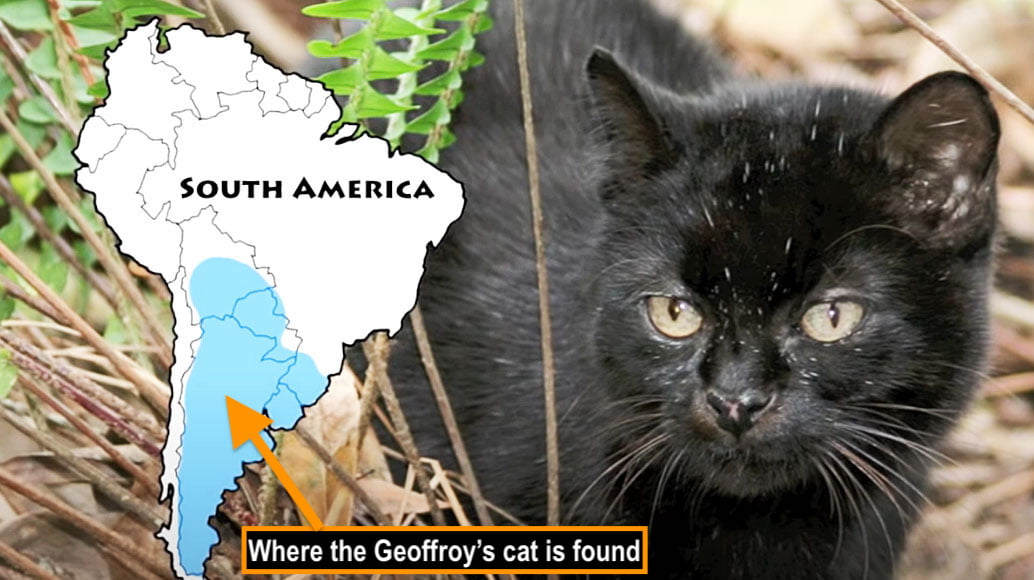This video from Big Cat Rescue (BCR) shows a melanistic Geoffroy's cat. The point being made right away is that this small wild cat species is not always dark charcoal or black like this. The "normal" colour of their fur varies from smoky grey to lion-coloured and there are many intermediate shades of colouring. The four subspecies (as at 2002) vary considerably in colour as does their body size. Although you can't see them on this melanistic Geoffroy's cat, there are numerous small black spots on the body. The tale is ringed with dark bands. On a sad note, as at 2002, the pelt of Geoffroy's cat was the most frequently traded cat skin after the bobcat.
However, melanistic forms of this cat are common. Melanism is due to a dominant autosomal allele. "Melanism" refers to cats going black or dark charcoal when they should be normally brown with tabby-style markings.
 |
| Image: PoC. The cat is a screenshot from the video. |
This cat is found in South America only. If you visualise South America and draw a line across the middle, this cat lives below that line and on the right hand side.
They spend most of their time on the ground but they are extremely good climbers. Their habitat varies depending upon where they are. In Chile they like areas of dense cover while in Uruguay they prefer open woodlands and "remnants of open savannas associated with marshes".
In the video you can hear the presenter, one of BCR's staffers, mentioning that they like to sit upright on their haunches or stand on their hind feet while using their tail as a balancing aid. I call this the meerkat position. Some domestic cats do it particularly dwarf domestic cats. Interestingly, it is on record that one individual cat held this position for 10 minutes. That is quite remarkable. The position is normally taken up to check for predators and the scan the landscape.
Sometimes Geoffroy's cat use the crooks of trees as defecation sites. This is unusual as well. In one park, the Torres del Paine NP in Chile, 93% of all faeces were in trees. They are described as "arboreal middens". The faeces were deposited 3 to 5 m above the ground usually where the main trunk splits into several branches.
 |
| Melanistic Geoffroy's cat. Screenshot from video. |
Even in a landscape which has very few trees this cat likes to go to the toilet in the crooks of trees. In an almost treeless landscape 18% of 190 Geoffroy's cat scats were found in the crooks of trees.
The Geoffroy' cat is mainly nocturnal with their main activity taking place after sunset and before sunrise. In Chilean Patagonia the cat is most active at night or daytime activity was restricted to the early morning or late afternoon.
They mainly feed on small rodents and birds. A male Geoffroy cat in Uruguay had the remains of a hare in its stomach. In one park, 80% of scats contain the remains of small animals and birds occurred in 50% of scats. Sometimes this cat goes fishing and will also eat frogs. They do not have an aversion to water and will jump in water to fish.
It is believed to be a solitary cat and their home ranges vary between about 3 km² for a female to around 12 km² for a male.
Gestation varies between 62 and 67 days. Litter sizes vary from one to 3 kittens with the average observed in captivity being 1.5 kittens. Kittens are born with their eyes closed and they are opened at 19 days of age.
Source: Various - primarily Wild Cats of the World and referenced works.

No comments:
Post a Comment
Your comments are always welcome.